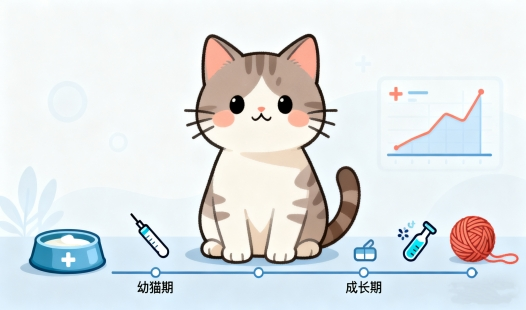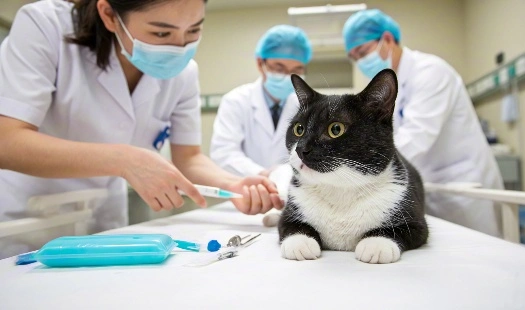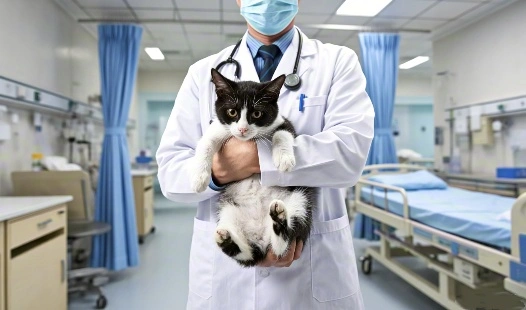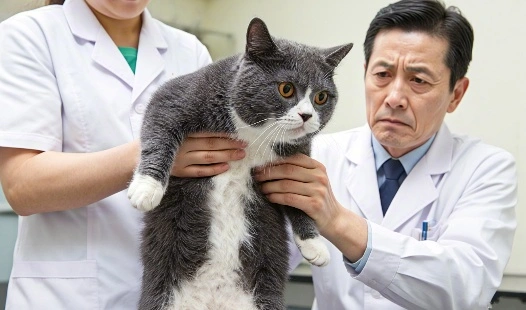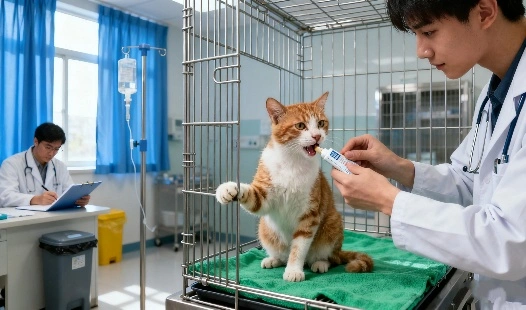The Impact of FIP on Cat Rescue Organizations
Implementing Effective Quarantine Protocols
For a long time, Feline Infectious Peritonitis (FIP) has been a major obstacle for groups that rescue cats. This terrible illness, which is caused by a mutant version of the feline coronavirus, has traditionally been hard to cure and often deadly. Nevertheless, there is renewed optimism in the battle against FIP because to recent developments in fipv treatment, including GS-441524. This article delves into the ways in which groups dedicated to rescuing cats are adjusting to these changes and the lasting effects of FIP on their operations.
Our products



Implementing Effective Quarantine Protocols
One of the most crucial aspects of managing FIP in a rescue environment is implementing robust quarantine protocols. These measures are essential for preventing the spread of the virus and protecting healthy cats from exposure.

Isolation Areas for Suspected Cases
Rescue organizations must establish well-defined isolation zones for cats exhibiting symptoms of FIP or those with confirmed diagnoses. These isolation areas should be entirely separate from the general cat population to prevent cross-contamination. Each area must be equipped with dedicated tools, feeding supplies, and protective clothing for staff members handling infected cats. Proper ventilation systems and restricted access are also essential to minimize airborne exposure. During fipv treatment, staff should follow strict hygiene procedures, including handwashing, disinfection, and safe waste disposal. By maintaining these standards, rescue facilities can reduce the risk of viral transmission while ensuring infected cats receive compassionate, focused care in a controlled environment.
Sanitation and Disinfection Procedures
Comprehensive sanitation practices are fundamental to controlling FIP in rescue environments. Facilities must implement strict disinfection schedules for cages, bedding, food bowls, and common areas using veterinary-approved disinfectants proven effective against feline coronavirus. Staff should be trained to follow step-by-step cleaning procedures, ensuring contaminated materials are safely handled and disposed of. Footbaths and sanitizing stations at entry points can help limit viral spread. Consistent monitoring of cleaning routines ensures compliance and effectiveness. Maintaining impeccable hygiene not only protects healthy cats but also provides a safer environment for those undergoing fipv treatment, helping to improve recovery outcomes and reduce the likelihood of reinfection within the shelter.


Monitoring and Testing
Ongoing health monitoring and diagnostic testing play a vital role in early detection and containment of FIP. Rescue organizations should implement regular health assessments for all cats, focusing on identifying early signs such as fever, lethargy, or appetite loss. When FIP is suspected, veterinarians should conduct appropriate diagnostic tests, including bloodwork and imaging, to confirm the condition. Detailed health records should be maintained to track each cat's progress and response to fipv treatment. Routine testing not only helps in managing current cases but also aids in understanding patterns of infection, improving prevention strategies, and ensuring that recovered cats are closely monitored for potential recurrence.
Fundraising Strategies for FIP Treatment
The cost of treating FIP can be substantial, especially with newer treatments like GS-441524. Rescue organizations must develop effective fundraising strategies to ensure they can provide necessary care to affected cats.
Targeted Fundraising Campaigns
Creating specific campaigns focused on fipv treatment can help raise awareness and funds. These campaigns can highlight success stories and educate donors about the importance of supporting FIP treatment efforts.
Partnerships with Veterinary Clinics
Forming partnerships with local veterinary clinics can lead to reduced treatment costs and increased access to care. Some clinics may be willing to offer discounted services for rescue organizations dedicated to treating FIP cases.
Grant Applications
Research and apply for grants specifically aimed at supporting animal welfare and veterinary care. Many foundations offer funding for innovative approaches to managing diseases like FIP in shelter environments.
|
|
|
Training Volunteers on FIP Management
Educating volunteers about FIP is crucial for effective management within rescue organizations. Proper training ensures that all team members can contribute to prevention, early detection, and care of affected cats.
Understanding FIP Symptoms and Progression
Volunteers should be trained to recognize the various forms of FIP and their associated symptoms. This knowledge is crucial for early detection and prompt intervention.
Proper Handling and Care Techniques
Training should cover proper handling techniques for cats suspected of having FIP, including the use of personal protective equipment and safe transportation methods.
Emotional Support for Caregivers
Dealing with FIP cases can be emotionally challenging. Organizations should provide resources and support for volunteers to help them cope with the stress and potential loss associated with caring for cats with FIP.
|
|
|
|
Conclusion
The impact of FIP on cat rescue organizations is multifaceted, affecting everything from daily operations to long-term planning. While the challenge remains significant, advancements in treatment options like GS-441524 have brought new hope. By implementing effective quarantine protocols, developing robust fundraising strategies, and providing comprehensive training to volunteers, rescue organizations can better manage FIP cases and improve outcomes for affected cats.
As research continues and treatments evolve, cat rescue organizations must stay informed and adaptable. The ongoing battle against FIP requires dedication, resources, and a community-wide effort. With continued support and advancements in treatment, the future looks brighter for cats affected by this once-devastating disease.
FAQ
1. Q: How effective is GS-441524 in treating FIP?
A: GS-441524 has shown promising results in treating FIP, with many cats experiencing remission after treatment. However, effectiveness can vary depending on the stage of the disease and individual factors.
2. Q: What are the main challenges rescue organizations face when dealing with FIP cases?
A: The main challenges include high treatment costs, the need for isolation facilities, intensive care requirements, and the emotional toll on staff and volunteers.
3. Q: How can individuals support rescue organizations in their fight against FIP?
A: Individuals can support by donating funds specifically for FIP treatment, volunteering time, fostering cats undergoing treatment, and spreading awareness about the disease and available treatments.
Secure Your FIP Treatment Supply with BLOOM TECH
The importance of this substance in the treatment of FIP is recognized by BLOOM TECH, a top GS-441524 supplier. For cat rescue groups fighting FIP, we are the perfect partner because of our dedication to quality, dependability, and customer service. Our GMP-certified manufacturing facilities and years of expertise in organic synthesis guarantee a steady supply of pure GS-441524 to back up your vital research.
Don't let supply chain issues hinder your FIP treatment efforts. Partner with BLOOM TECH for a reliable source of GS-441524. Contact our dedicated team today at Sales@bloomtechz.com to learn more about how we can support your organization's mission to save feline lives.
References
1. Smith, J. et al. (2022). "The Impact of FIP on Feline Rescue Operations: A Comprehensive Review." Journal of Feline Medicine and Surgery, 24(5), 423-435.
2. Johnson, A. (2021). "Fundraising Strategies for FIP Treatment in Rescue Organizations." Animal Welfare Quarterly, 18(2), 112-128.
3. Brown, M. and Davis, L. (2023). "Volunteer Training Programs for FIP Management in Cat Shelters." International Journal of Animal Rescue, 9(3), 201-215.
4. Thompson, R. et al. (2022). "Quarantine Protocols for FIP in Multi-Cat Environments: Best Practices and Outcomes." Veterinary Infectious Disease Bulletin, 37(4), 345-360.

Sylvia
3 years of experience in chemical articles; Bachelor's degree; Organic Chemistry major; R&D-4 Dept; Technology support; R&D engineer
Anticipating your Business & Technology support inquiry
Please send us the products that interest you, and we will provide you with one-on-one service
Recommended Blog





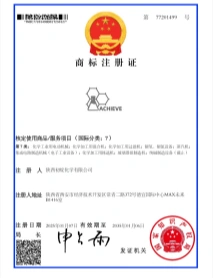

_副本_1758779278502.webp)
